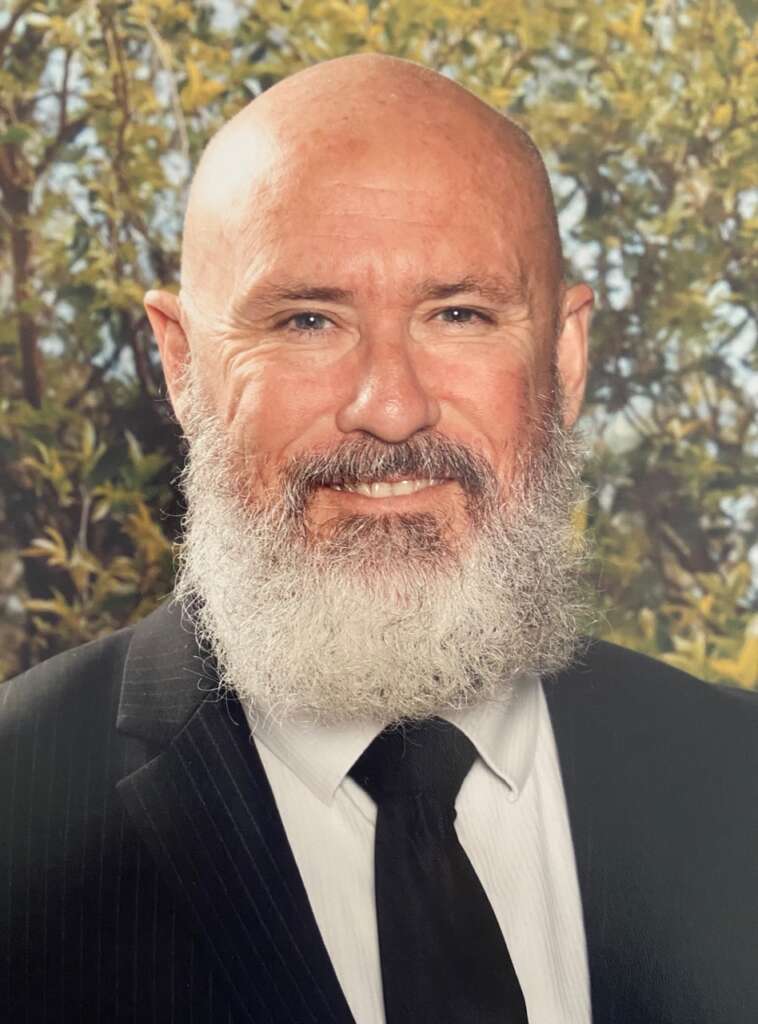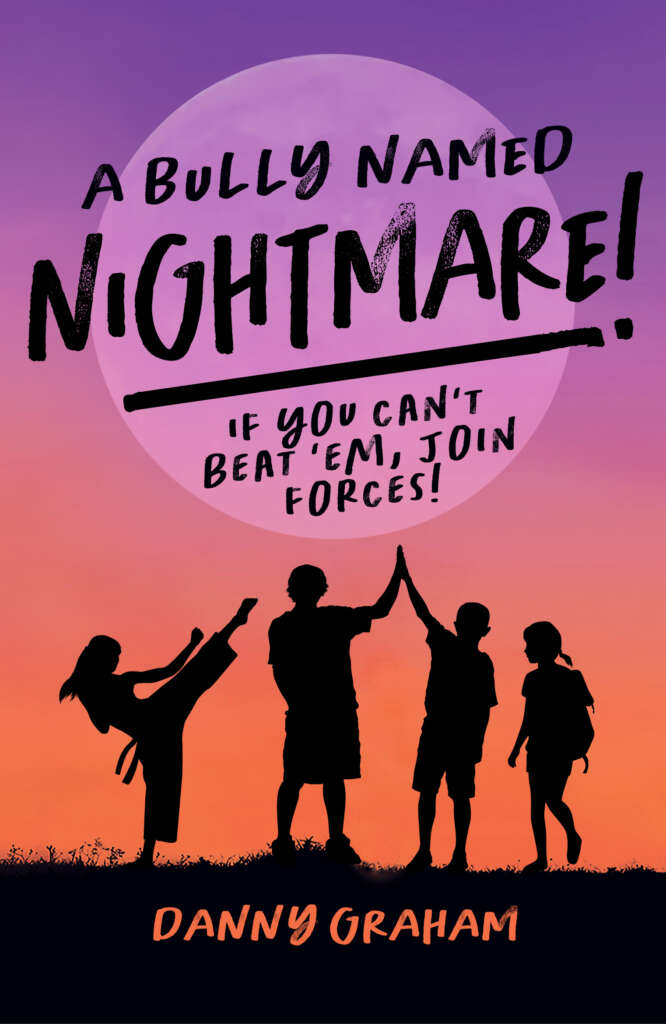'A bully named Nightmare' – the book designed to stop bullying in its tracks
Danny Graham’s new book, A bully named Nightmare – for 11-14-year-olds – has been 30 years in the making and two years in the writing.
Graham brings to its pages three decades of experience as a psychologist, school teacher, school counsellor, father of three boys, and mentor.

Danny Graham brings together three decades of experience as a psychologist, school teacher, school counsellor, father of three boys, and mentor in the book.
He also brings his own painful memories as a child who was bullied, interweaving them with the experiences of countless young people he has supported over those 30 years in various capacities.
“I wrote the book because I have seen first-hand the devastation that bullying can have on not only the young person involved but also their families and loved ones,” Graham says.
“As a young primary school student, I experienced significant verbal and physical bullying. Being very thin at the time, I was frequently teased about my body, which led to me being extremely self-conscious about my appearance. On one occasion I was attacked in front of all my friends at lunch on the school oval.”
The book’s protagonist, a 12-year-old boy named Stevie, faces a similar scenario. His world is turned upside-down when a new student (known as Nightmare) comes to the school and begins to bully him both physically and verbally. Stevie goes from being a happy-go-lucky student who enjoyed school and spending time with his friends there, to viewing school as a prison where he is constantly looking over his shoulder, wondering when the next attack will come.
Graham remembers the pain.
“It is hard to put into words how distressing I remember that time of my life. Like Stevie, I went from being a happy-go-lucky young boy to being withdrawn, depressed, angry, and constantly anxious,” he says. “School became a prison where I was forced to navigate, on a daily basis, ways to avoid this boy. The stress from this negatively affected not only my learning but also my relationships with peers and my family – not to mention my mental health.
“And though this ongoing battle led me to train in a variety of combat sports and some years later attain my Black Belt, the emotional and psychological impact of those years stayed with me long into adulthood … and in some ways still affects me.”
Of course, any book that deals sensitively with the problem of bullying will be a helpful resource in a world where bullying is still such a significant problem.
But A Bully named Nightmare does so much more than merely provide a sensitive portrayal of a contemporary concern – this book is a tailor-made, skilfully executed resource aimed at stopping bullying in its tracks.
Most importantly, Graham has worked hard to make the book interesting for the kids who read it. As a teacher of Grade 6 kids, he knows there’s no point in giving kids solid advice if they find it too boring to engage with. This story is designed to keep them invested.
The reader is taken on a journey seen through the eyes of Stevie, where they can safely explore ways to deal with bullying and improve their own mental health.
Graham also knows that a kid is more likely to discuss a book character than their own experiences of bullying in a classroom setting.
“In a sense, the reader is taken on a journey seen through the eyes of Stevie, where they can safely explore ways to deal with bullying and improve their own mental health.”
Graham has ensured the book provides easy-to-understand information about a range of emotions young people face, including shame, anger, depression, and anxiety along with ways to manage them.
“My book gives the reader insight into the thoughts and emotions of three groups of people: Stevie – the main character and direct victim of the bullying; the indirect victims – like Stevie’s parents, other students observing the bullying, and the teachers trying to manage the fallout; and the bully himself,” he says.
After being bullied by “Nightmare,” protagonist Stevie begins to experience mysterious “Night Visitors”. Slightly eerie and confusing but intriguing, these visitors from history, such as Harriet Beecher Stowe and Helen Keller, share insights with Stevie that help him.
Graham has also created workbooks for students and teachers using the book – ensuring that it corresponds to the teaching curriculum and ticks the right boxes with teachers. Schools that purchase a classroom set of 30 books through Graham’s publisher will not only save on each book, but will also receive both workbooks as a download so they can be reprinted and used year after year without further cost.
The facts about bullying and the tremendous toll it takes on kids and the adults they become
Creating a book that ticks so many boxes – aligning with the educational curriculum, being an affordable and valuable resource for teachers, and being engaging and exciting for kids – is a mind-blowing undertaking.
But, from Graham’s perspective, the stakes are incredibly high – and more so than most people realise.
He reads aloud from a report released by the Alannah and Madeline Foundation on Australian schools:
“Each year, 543,000 bully perpetrators instigate more than 45 million bullying incidents. This means that, on average, male bully victims experience 51 bullying incidents and female bully victims experience 48 bullying incidents each year, or more than one incident per school week,” he says.
He goes on: “This analysis has identified that the costs associated with bullying total an estimated $2.3 billion, incurred while the children are in school and for 20 years after school completion, for each individual school year group.”
Approximately 2.3 million students nationally experience bullying. – Make Bullying History Foundation
Graham has even more horrifying statistics.
“The research on the prevalence of bullying in Australian schools is again debated and obviously varies from school to school. Yet, recent research including survey findings released by the Australian organisation ‘Make Bullying History Foundation’ reported that four in every five students (80 per cent) believe bullying is a serious problem at their school,” he says.
“It is estimated that approximately 2.3 million students nationally experience bullying.”
The bullying they experience takes a heavy toll, Graham explains.
“Recent research suggests that children who experience verbal and physical bullying are at a significantly greater risk of developing depression and anxiety disorders than children who do not experience bullying. And, tragically, we know that untreated and/or prolonged episodes of depression can lead to substance abuse – particularly in the teenage years and self-harm.”
It also undermines children’s ability to learn.
“There are numerous studies documenting the relationship between bullying and poor academic performance. It shouldn’t surprise us that if a young person is constantly worried about being harassed or attacked they will take in little to nothing of what the teacher is saying in class,” he says.
And especially heartbreaking, “one of the most common behaviours of victims of bullying is withdrawal – often related to the shame they experience by being bullied.”
“And when young people withdraw, they leave behind the very support systems that could assist them navigate and deal with the person bullying them,” Graham says.
Equally alarming, research shows childhood bullying isn’t just a challenging experience that some kids go through and then move on from as adults. The effects of bullying last for decades.
A new study … provides more evidence that bullied kids might not totally bounce back, that their health, relationships, and even economic status may be at risk even into middle age.

A bully named Nightmare is available from Koorong stores nationally.
Graham runs through some more stats.
One study found that the consequences of childhood bullying, including depression, can persist even 40 years after the bullying occurred, he says.
And a new study published in the American Journal of Psychiatry, out of King’s College London, provides more evidence that bullied kids might not totally bounce back, that their health, relationships, and even economic status may be at risk even into middle age.
It looked at both occasional and frequent bullying and found it was associated with poorer health later in life. Victims had more psychological distress at 23 and 50, and were at higher risk for depression, suicidal thoughts, and anxiety disorders at age 45. The risk levels were similar to those for children who “had been placed in public or substitute care … or who reported multiple childhood adversities.”
“Bullying victims also rated their health more poorly and were more likely to have poor cognitive functioning at 50,” Graham says.
This article is Part 1 of a two-part interview with author Danny Graham ahead of tomorrow’s National Day of Action against Bullying and Violence.
In Part 2, released tomorrow, Graham shares how to recognise bullying and what parents and schools can do to prevent it.
Email This Story
Why not send this to a friend?



